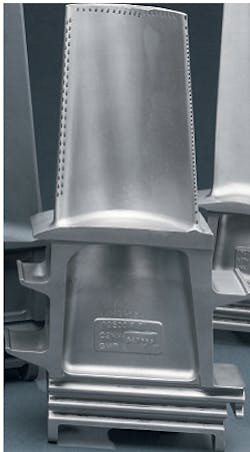Thermography helps optimize cooling channels in turbine blades
Engineers at Sulzer Turbo Services Venlo (Lomm, The Netherlands) are using lock-in thermography to help them evaluate the efficiency of the cooling channels in turbine blades and vanes.
To do so, they have built a test rig that deploys an ultrasound transducer that introduces elastic waves into the turbine components.
In an homogeneous material, the reflected waves are evenly distributed. However, at locations where the alloy is defective, some of the wave energy is absorbed, and heat is generated. This heat has a different infrared (IR) radiation profile than its surrounding area and can be detected by an IR camera.
Defects that can be detected include cracks along the grain boundary that have been caused by corrosion, oxidation, mechanical stresses, or casting defects.
The researchers believe that the results of their work will provide more information about how the cooling-hole geometry of the turbine parts affects their cooling efficiency.
Researchers Jos Willems and Marius van der Gun detailed the design of the test rig in a recent issue of the Sulzer Technical Review which can be found here.
-- Dave Wilson, Senior Editor, Vision Systems Design
